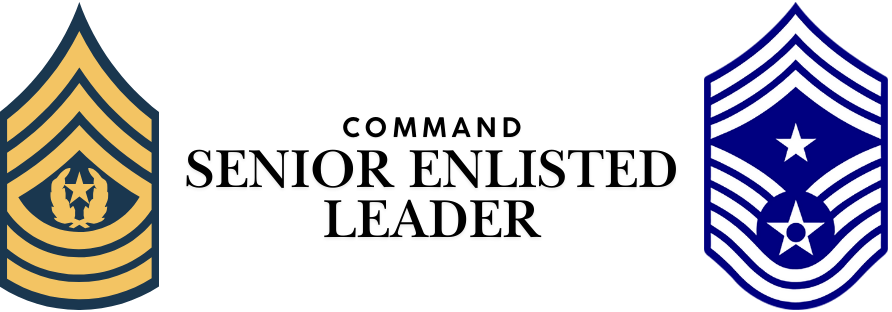Mission & Vision
Providing a comprehensive resource platform that supports the professional development, mentorship, and well-being of enlisted leaders. I’m committed to fostering a culture of resilience, unity, and excellence, equipping our Enlisted Leaders with the tools, insights, and connections needed to lead with strength and integrity. Through this website, I aim to inspire growth, encourage innovation, and uphold the values that drive our enlisted leaders to excel in service to our nation and our communities.
Who is CSEL and What do they do?
The Command Senior Enlisted Leader (CSEL) in the National Guard plays a crucial role as the senior enlisted advisor to the Commanding General (CG) and The Adjutant General (TAG), providing insights and guidance on enlisted matters to help ensure mission success. This position has evolved over time to better meet the needs of enlisted personnel and the National Guard’s operational requirements.
Role and Responsibilities
1. Primary Functions
– Advises the commander on enlisted personnel matters, including morale, welfare, readiness, and training.
– Acts as a bridge between enlisted personnel and the command team.
– Represents the concerns of enlisted members to ensure their needs align with mission objectives.
2. Leadership
– Mentors noncommissioned officers (NCOs) to develop strong leadership within the ranks.
– Promotes the NCO Corps and enforces standards of discipline and performance.
3. Ceremonial Duties
– Represents the enlisted force at official events and ceremonies.
– Often serves as the face of enlisted leadership during public engagements.
4. Liaison Role
– Facilitates communication between state-level senior enlisted leaders and their federal counterparts in the Army or Air National Guard.
– Coordinates with the National Guard Bureau (NGB) for policies affecting enlisted personnel.
History and Evolution
1. Early Days
– The National Guard’s roots trace back to 1636, predating the formation of the United States Army.
– In its early history, leadership responsibilities for enlisted matters fell informally to senior NCOs, without a designated position like today.
2. World War I & II
– As the National Guard became more integrated into federal service, the importance of a strong enlisted leadership structure grew.
– Senior NCOs became vital in maintaining discipline and readiness among troops.
3. Post-Vietnam Era
– The modern concept of the CSEL role began to emerge, inspired by the development of senior enlisted positions like the **Sergeant Major of the Army** (established in 1966) at the federal level.
4. Institutionalization of the CSEL Role
– By the late 20th century, National Guard units recognized the need for a formal senior enlisted leader role akin to the active-duty forces.
– CSEL positions became standardized at the state and national levels to ensure effective enlisted leadership across diverse missions, from state emergencies to overseas deployments.
5. Modern CSEL
– Today, most states, territory, and the District of Columbia has a designated Command Senior Enlisted Leader for the Army and Air National Guard.
– The CSEL works closely with both the Commanding General (CG) and the NGB, ensuring that enlisted voices are heard at the highest levels.
Significance in the National Guard
The CSEL ensures enlisted personnel are ready, motivated, and equipped to handle missions ranging from disaster response to combat operations. They exemplify the NCO creed of being the “backbone of the Army” and the “tip of the spear” in leadership, embodying values such as “duty, honor, and selfless service”.
